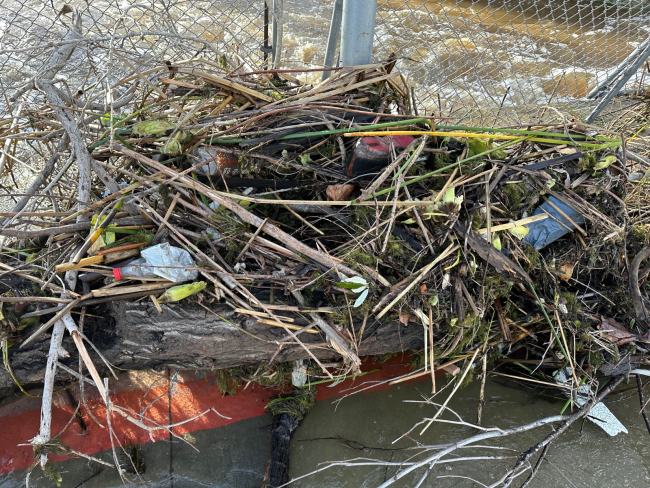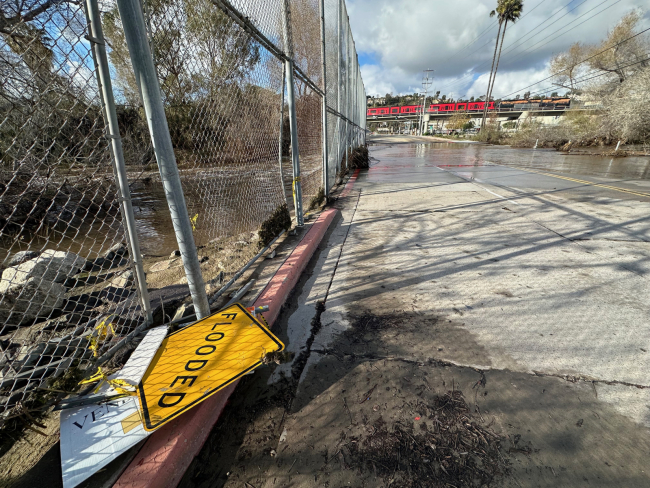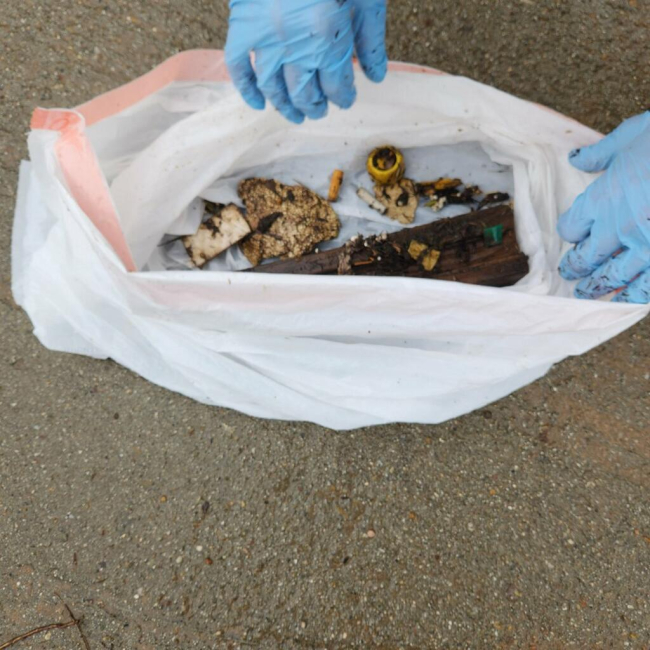Guest blog by: TJ Palmer and Ibisia Jack, San Diego State University Master of Science Watershed Science graduate program students.
Where does marine debris originate, and how does it make its way to the ocean? There are many possible avenues for land-based trash to become marine debris. In Southern California, San Diego State University (SDSU) is working to find the answers. This multi-departmental project at SDSU is quantifying marine debris in the highly urbanized San Diego River and working to better understand how it travels through our waterways.
With support from a NOAA Marine Debris Program grant, this research project aims to create a comprehensive understanding of how and where trash is coming from, what happens to it in the river system, and how much and under what conditions trash is exported to the ocean. Much is still unknown about the role that rivers like the San Diego River play in the journey of marine debris. Since most marine debris comes from mismanaged trash on land, studies like this are needed to make informed decisions about future marine debris mitigation efforts.
Significant challenges in a comprehensive study like this are the miles of river to survey, the amount of trash on river banks, and difficulties accessing sites. SDSU researchers are using a two-pronged approach to tackling these challenges. First, we are partnering with a local nonprofit, the San Diego River Park Foundation (SDRPF), by incorporating their extensive community science dataset into the study. In 2020 alone, SDRPF worked with volunteers to survey trash, log over 3,900 volunteer hours, and remove an astonishing 166,000 pounds! This incredible community engagement provides a better understanding of the trash in the river and surrounding areas. Volunteers flag and locate trash sites, identify a potential source of the trash, such as litter or unhoused encampment, and estimate the volume of trash present. Each site is then returned to and cleaned up at a later date. The data collected from these surveys are crucial to understanding trash in the San Diego River and represent the basis of our knowledge of where and how much trash there is.
Second, we are coupling high-resolution remotely-sensed imagery with machine learning to identify and categorize trash. This approach could drastically increase the area of trash surveys and allow surveying in difficult to access parts of the river that have so far been undocumented by SDRPF. This method could be adopted in other river systems facing similar challenges.
Another challenge is determining how and when trash is transported. Southern California’s high variability in seasonal rain makes this especially difficult to understand. Limited trash has been observed during in-stream net sampling during dry summer and fall months. However, during rain events this winter, while the river was rising, we observed and collected mobilized trash, illuminating a key seasonal trend in trash transport. Another approach to understanding trash transport will be incorporating a lab study investigating the rate at which trash breaks down into smaller pieces. Since most in-stream collections point toward smaller and lighter trash pieces moving in the river, knowing if or how larger trash breaks up could be a substantial part of trash transport.
When this project is completed, SDSU researchers will know with much greater accuracy and confidence how much trash is in the San Diego River, what is happening to this trash, and where it is going. Through efforts like this, we hope to better understand and ultimately reduce the amount of trash entering our environment. The SDSU team and its partners look forward to furthering this project.




